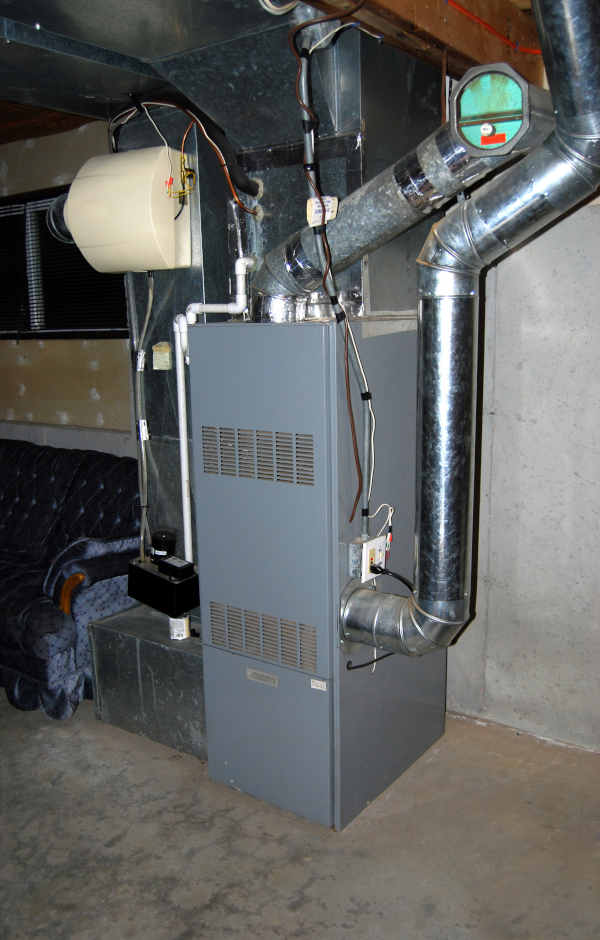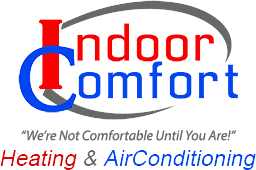
The crisp autumn air signals that it’s time to dust off the sweaters and flannel PJs. It also means you’ll soon be firing up the furnace for the winter.
As you ready your home for the cold months ahead, now is the perfect time to evaluate if your existing furnace is still up for the job. Understanding your furnace’s efficiency rating is the first step.
What Exactly is AFUE?
AFUE stands for Annual Fuel Utilization Efficiency. This percentage indicates how efficiently your furnace converts fuel to heat.
For example, say your furnace has an 80% AFUE rating. This means 80% of the fuel it consumes actually turns into heat for your home. The other 20% is lost during the combustion process.
The higher the AFUE rating, the more heat you get for your energy dollar. Modern furnaces typically range from 80% to 98.5% AFUE.
A Brief History of Furnace Efficiency Standards
In 1987, the U.S. Department of Energy established minimum efficiency standards for home furnaces and other major appliances with the National Appliance Energy Conservation Act.
This law set the first nationwide AFUE standards for furnaces:
- 78% AFUE for furnaces manufactured between 1987–1992
- 80% AFUE for furnaces made after 1992
The DOE has periodically reviewed and raised the minimum standards over the years. Today, any new furnace must achieve at least 80% AFUE to meet the latest federal regulations.
Why You Should Go Above the Minimum AFUE
While 80% AFUE meets the law, it’s not necessarily the optimal efficiency for your home. Upgrading to a furnace with a higher rating can lead to significant energy savings over time.
For example, switching from an old 70% AFUE furnace to a new 95% AFUE model can lower your annual heating costs by 30% or more.
Here are some key advantages of choosing a high-efficiency furnace:
Lower Energy Bills
More heat produced per BTU of fuel consumed equals lower utility costs to stay comfortable.
Improved Comfort
Precise temperature control and consistent airflow keeps each room at the ideal temperature.
Healthier Indoor Air
Advanced filtration removes more dust, pollen, and other irritants from the air your family breathes.
Quieter Operation
Insulated cabinets and multi-speed blowers produce very little noise compared to older furnaces.
Longer Equipment Life
Quality components and durable heat exchangers extend the operating life.
Rebates and Tax Credits Utility rebates, tax credits, and financing incentives can help offset the higher upfront cost.
What Impacts AFUE Outside the Furnace Itself
While the AFUE rating focuses on the furnace alone, your home’s insulation, windows, ductwork and other factors influence the overall efficiency.
Even the highest AFUE furnace can’t overcome major air leaks or inadequate insulation. Your heating contractor should evaluate the home’s “envelope” and ductwork to maximize energy savings.
Here are some weak spots that allow heated air to escape:
- Poor attic, wall, and basement insulation
- Drafty windows and doors
- Gaps along siding, trim, and foundations
- Leaky ductwork in unconditioned spaces
- Chimney issues like loose mortar or no liner
Sealing leaks and adding insulation helps your furnace heat your living space efficiently. Don’t leave those potential energy savings on the table.
AFUE by Furnace Type
Not all furnaces are created equal when it comes to efficiency ratings. The type of fuel, heating method, and features impact AFUE.
Here’s how common modern furnace types compare:
Gas Furnaces
- Mid-Efficiency (80% – 83% AFUE): $900 – $1,800
- High-Efficiency (90% – 98.5% AFUE): $3,000 – $4,000
Oil Furnaces
- Mid-Efficiency (83% – 87% AFUE): $2,000 – $3,000
- High-Efficiency (90%+ AFUE): $4,000 – $6,000
Electric Furnaces
- Baseboard Heaters (95% – 100% AFUE): $300 – $1,500
- Central Forced-Air (98% – 99% AFUE): $1,200 – $1,800
Heat Pumps
- Air Source (80% – 90% AFUE): $3,000 – $5,500
- Geothermal (200% – 350% AFUE): $5,000 – $10,000
While electric furnaces and heat pumps can achieve very high AFUE ratings, operating costs are heavily dependent on local energy prices. Crunch the numbers for your climate.
How to Determine the Right AFUE for Your Home
Choosing the most cost-effective AFUE depends on many factors:
- Your local energy rates
- The age and condition of your home
- How long you plan to stay in the home
- Your budget for equipment and installation
As a general guideline:
- Older homes may benefit from mid-range upgrades (90% AFUE).
- Newer tight homes can maximize savings with the highest ratings (95%+ AFUE).
Use the U.S. Department of Energy’s AFUE savings calculator to estimate the payback period of different furnace efficiency levels in your region.
Getting a few quotes from HVAC contractors can also help narrow down the sweet spot for your situation. Ask them to calculate the return on investment timeframe so you can make an informed decision.
Maintaining AFUE Through Proper Maintenance
To ensure your furnace delivers its rated efficiency over the long haul, be diligent about annual maintenance:
- Replace air filters monthly during heating season.
- Have a pro deep clean and inspect the furnace each fall.
- Address any combustion issues right away.
- Repair or replace faulty ductwork.
- Test for and seal air leaks around the home.
Neglecting maintenance can lower the AFUE over time. Stay on top of it to get the efficiency and savings you paid for.
Is It Time for an Efficiency Upgrade?
If your furnace is over 15 years old or has an AFUE below 80%, replacement may be worthwhile despite the upfront cost.
Compare the cost of repairing an outdated unit to the energy savings and rebates you can gain from upgrading. The numbers might surprise you.
A new high-efficiency model combined with sealing air leaks can transform a drafty money pit into a cozy oasis. Just don’t expect the old furnace to fund your beach house dreams.
Focus on the AFUE rating, but also consider the warranty, contractor reputation, and overall system design. Aim for the longest payback period reasonable for your situation.


